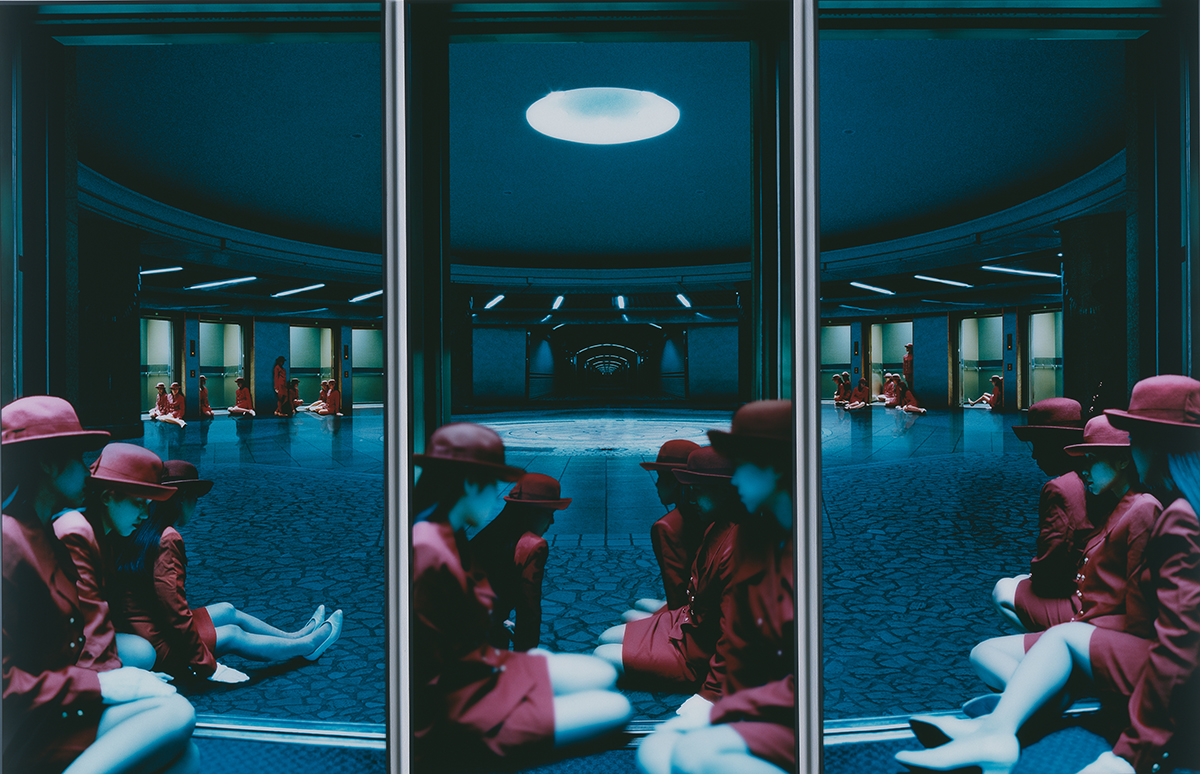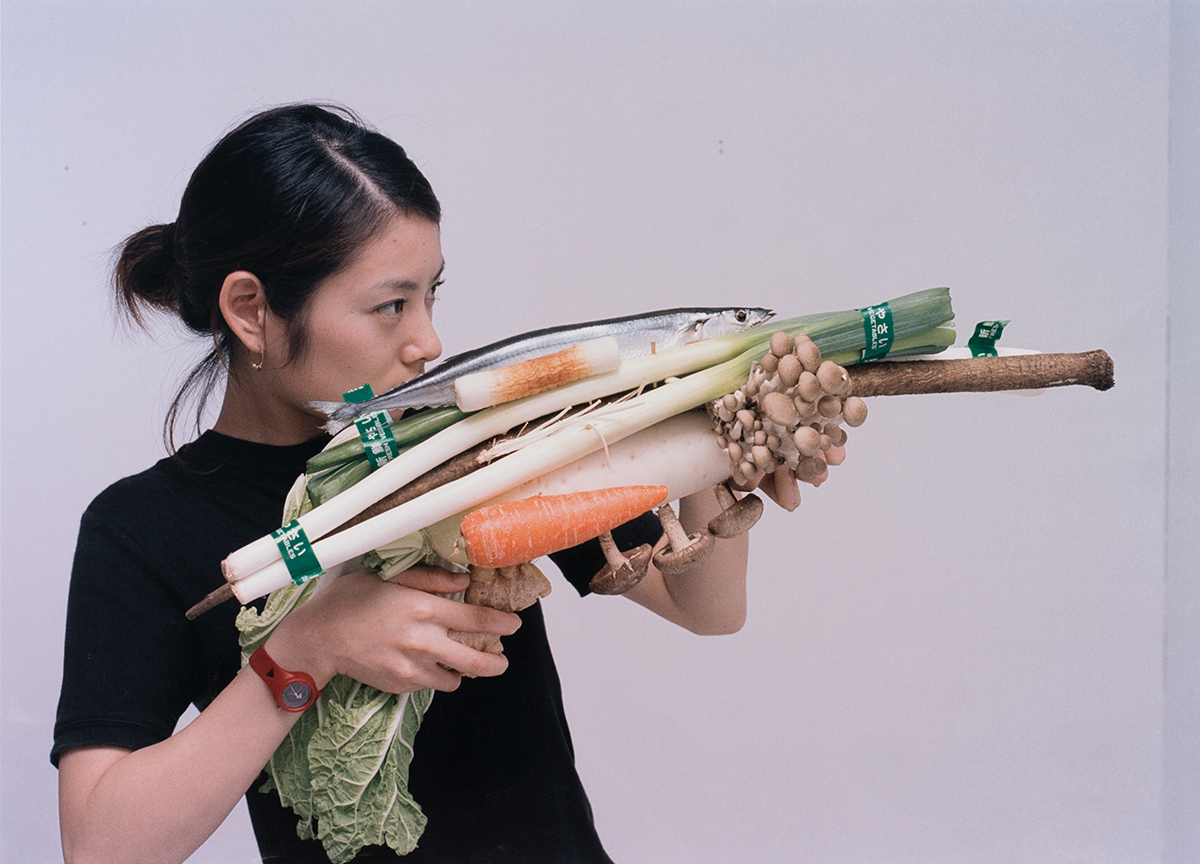PRISM OF THE REAL: MAKING ART IN JAPAN 1989–2010
HAPPENINGText: Alma Reyes
Contemporary photographic artist Miwa Yanagi shows two works from the series “Elevator Girls,” highlighting young female elevator attendants who have been reduced to mere symbols of submission and objects of service — a common presence in the workforce and retail industry, especially in the Showa era. In the three-paneled digital photographs “Aquajenne in Paradise II” the elevator staff, dressed in identical uniforms, slouch on the elevator floor and look void of human expression and individuality. “The White Casket” (1994) similarly portrays the women gradually melting away inside the elevator until they liquidize into pools of blood. The red puddle effect reminisces the classic wrapping paper of Mitsukoshi Department Store.

Miwa Yanagi, Aquajenne in Paradise II, 1995, Collection of The National Museum of Art, Osaka © Miwa Yanagi
The third section, “A Promise of Community,” focuses on the underlying implications of existing and future relationships in local communities. Xijing Men, a project-based collaboration team made up of Tsuyoshi Ozawa, Chen Shaoxiong from China, and Gimhongsok from Korea, have been engaged in a series of performances, drawings, photographs, and installations that scrutinize imagined activities in a fictitious city called Xijing (meaning western capital). The team employs humor, satire, sarcasm, and absurdity to exaggerate tradition, politics, government, economics, and world sports events, as demonstrated in “Chapter 3 Welcome to Xijing – Xijing Olympics” (2008). Congruently produced at the timing of the 2008 Beijing Olympics, the series improvised sports categories, such as relay races using cigarettes, marathon maps, or shot put throwing with eggs while families and friends act out the roles of judges and audiences, all as a mockery toward stately ceremonies often powered by politics.

Xijing Men, Chapter 3 Welcome to Xijing – Xijing Olympics, 2008, Collection of the 21st Century Museum of Contemporary Art, Kanazawa © Xijing Men, Photo: Keizo Kioku, Courtesy: 21st Century Museum of Contemporary Art, Kanazawa
In his own piece, “Vegetable Weapon: Saury fish ball hot pot/Tokyo” (2001), photographer Ozawa portrays a local girl holding a makeshift rifle formed by vegetables. The series began in 2001, capturing young women around the world, armed with “vegetable weapons” that are later feasted on in a hot pot meal. The irony feeds on weapons of destruction that transfigure into a source of community sharing. Ozawa, hence, injects ridicule into the idiocy of war and violence.

Tsuyoshi Ozawa, Vegetable Weapon: Saury fish ball hot pot/Tokyo, 2001, Collection of The National Museum of Art, Osaka © Tsuyoshi Ozawa
Sifting through the numerous artworks in mixed media and expressions, which also include those of Takashi Murakami, Yoshitomo Nara, Shinro Ohtake, Matthew Barney, and Dominique Gonzalez-Foerster, consumes moments of deep-seated contemplation about the vulnerability of our volatile minds and the ways lessons learned from history govern our present and future interrelationships with each other and the physical world.
Prism of the Real: Making Art in Japan 1989–2010
Date: September 3rd – December 8th, 2025
Opening Hours: 10:00 – 18:00 (Fridays and Saturdays till 20:00)
Closed on Tuesdays and September 24th (Open on September 23rd)
Place: The National Art Center, Tokyo
Address: 7-22-2 Roppongi, Minato-ku, Tokyo
Tel: +81 47-316-2772 (Hello Dial)
https://www.nact.jp
Text: Alma Reyes





